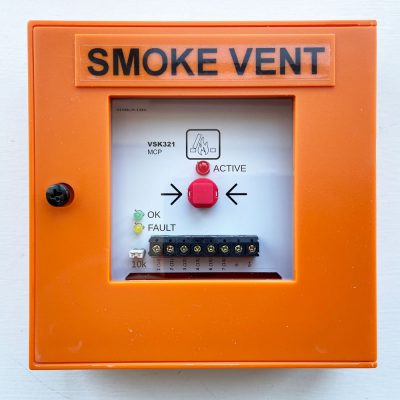How Smoke AOV Systems Comply With Building Regulations And Standards?
When it comes to building regulations and standards, ensuring security for residents is vital. One critical aspect of building safety is the implementation of Smoke AOV Systems Lambeth London. These systems are designed to effectively manage smoke and ensure a safe escape route in the event of a fire.
In this blog, we will look into the functionality of smoke AOV systems and their compliance with building regulations and standards.
What are Smoke AOV Systems?
Smoke AOV systems are designed to control and manage smoke in the event of a fire. They are made up of vents or windows that automatically open when smoke is detected allowing smoke to escape and allowing fresh air to enter the building.
By lowering the concentration of smoke these systems improve visibility, aid in the safe evacuation of occupants, and make firefighters' jobs easier.
Compliance with Building Regulations
Building codes and standards are in place to ensure that buildings are built and maintained safely and securely. Smoke AOV systems play an important role in meeting these regulations. Let's look at some of the key regulations that smoke AOV systems must follow.
1. Fire Safety Order (FSO) 2005 (UK)
In the United Kingdom, the Fire Safety Order (FSO) 2005 imposes legal obligations on individuals responsible for the safety of non-domestic premises. It is necessary to conduct an appropriate and sufficient risk assessment to identify fire risks and implement appropriate fire safety measures.
Smoke AOV systems are commonly employed as part of these measures, especially in high-rise buildings or buildings with complicated escape routes.
2. Building Regulations Part B (UK)
Building Regulations Part B governs fire safety within buildings in the UK. Approved Document B outlines the requirements for means of escape. This includes the provision of adequate and effective smoke ventilation systems which can often be met through the installation of Smoke AOV Systems Lambeth London.
3. National Fire Protection Association (NFPA) Standards (USA)
The National Fire Protection Association (NFPA) standards are widely accepted in the industry and serve as a guideline for fire protection measures. Although these standards are primarily applicable to the United States many of them are also referenced or adapted in other countries, including the United Kingdom.
NFPA compliance helps to ensure that smoke AOV systems meet the highest safety standards.
Compliance with Standards
Aside from building codes, smoke AOV systems must also meet specific standards to ensure their effectiveness and dependability. The following are some noteworthy standards that govern the design, installation, and maintenance of these systems.
1. EN 12101-2: Smoke and Heat Control Systems
The European standard EN 12101-2 specifies the requirements for smoke and heat control systems, including smoke AOV systems. It covers aspects such as product performance, installation, and testing procedures. Compliance with this standard ensures that smoke AOV systems meet the necessary safety requirements.
2. UL 793: Standard for Automatically Operated Roof Vents for Smoke and Heat
UL 793 is a standard developed in the United States by Underwriters Laboratories (UL). It specifies the safety and performance requirements for automatic roof vents used for smoke and heat control. Smoke AOV systems that comply with UL 793 assure dependability and efficacy in smoke extraction.
Conclusion
To ensure compliance with building regulations and standards, it is crucial to engage experienced and qualified professionals for the installation and maintenance of smoke AOV systems. By partnering with a reputable supplier such as Security Red Alert building owners can rest assured that their smoke AOV system is installed and maintained to the highest standards. We offer a range of services such as Fire Alarms Croydon by providing a comprehensive solution to safeguard buildings and occupants.
Visit us today to explore our range of compliant Smoke AOV Systems Lambeth London and enhance the fire safety of your building.



Comments
Post a Comment